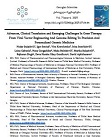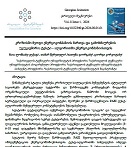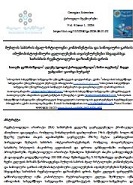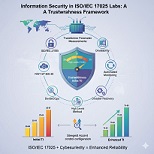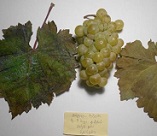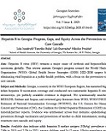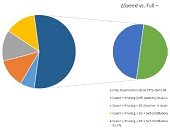Multimedia in education: what do students think?
Downloads
Multimedia is considered to be a cost-effective and practical learning tool. The research aims to study the attitude of students towards the use of various multimedia learning tools.
Method: In order to collect data there was used an online questionnaire. Students participated in the study via email and data was collected over a six-month period.
Results: A total of 263 students responded to the survey. The data shows that with the use of such devices as smartphones (88.88%) and laptops (89.19%), students have a positive experience of participating in the learning process. Students confidently use multimedia resources (76.31%) and have some knowledge of multimedia technologies as part of their learning experience. Students preferred traditional teaching methods over multimedia teaching methods (58.59%), but multimedia is considered to be an effective tool for hands-on learning (73.02%). Participants reported using e-learning tools more often 2D animations than other multimedia tools and 3D websites. Finally, students expressed interest in developing 3D animations (66.66%), using interactive 3D learning tools (65.45%), and developing simulators (64.07%) in order to better develop their future studies.
Conclusion: The results of the study show that the participants recognized the important role of multimedia as a practical learning tool that can significantly complement and improve traditional teaching methods, although according to the results of the study, multimedia cannot replace them. Students expressed particular interest in the development of interactive tools, including the use of simulators for learning to supplement their knowledge and enhance the learning process.
Downloads
Lone M, Vagg T, Theocharopoulos A, Cryan JF, Mckenna JP, Downer EJ, et al. Development and assessment of a three dimensional tooth morphology quiz for dental students. Anat Sci Educ. 2019;12(3):284e299. https://doi.org/10.1002/ ase.1815.
Vaughan T. Multimedia: making it work. Tata McGraw-Hill Education; 2006.
Clark J. Powerpoint and pedagogy: maintaining student interest in university lectures. Coll Teach. 2008;56(1):39e44. https:// doi.org/10.3200/CTCH.56.1.39-46.
Akçayır M, Akçayır G. Advantages and challenges associated with augmented reality for education: a systematic review of the literature. Educ Res Rev. 2017;20:1e11. https://doi.org/10.1016/ j.edurev.2016.11.002.
De Wit-Zuurendonk LD, Oei SG. Serious gaming in women's health care. BJOG. 2011;118(3):17e21. https://doi.org/10.1111/ j.1471-0528.2011.03176.x.
El Tantawi M, Sadaf S, AlHumaid J. Using gamification to develop academic writing skills in dental undergraduate stu dents. Eur J Dent Educ. 2018;22(1):15e22. https://doi.org/ 10.1111/eje.12238.
Vark LL. VARK a guide to learning styles. VARK; [acessed 2019 May 20]. http://vark-learn.com/.
https://www.scirp.org/reference/referencespapers?referenceid=1052713
GJMoiim Riva. Applications of virtual environments in medi cine. Meth info med. 2003;42(5):524e534. https://doi.org/ 10.1055/s-0038-1634379.
Kyaw BM, Saxena N, Posadzki P, Vseteckova J, Nikolaou CK, George PP, et al. Virtual reality for health professions education: systematic review and meta-analysis by the digital health edu cation collaboration. J Med Internet Res. 2019;21(1), e12959. https://doi.org/10.2196/12959
Henderson M, Selwyn N, Aston R. What works and why? Stu dent perceptions of ‘useful’ digital technology in university teaching and learning. Stud High Educ. 2017;42(8):1567e1579. https://doi.org/10.1080/03075079.2015.1007946.
https://ahaslides.com/ka/blog/likert-scale-5-point/
Spies C, Seale I, Botma Y. Adult learning: what nurse educators need to know about mature students. Curationis. 2015;38(2):1e7. https://doi.org/10.4102/curationis.v38i2.1494
Khatoon B, Hill KB, Walmsley AD. Dental students uptake of mobile technologies. BDJ. 2014;216:669. https://doi.org/ 10.1038/sj.bdj.2014.523
Maloney S, Chamberlain M, Morrison S, Kotsanas G, Keating JL, Ilic D. Health professional learner attitudes and use of digital learning resources. J Med Internet Res. 2013;15(1):e7. https://doi.org/10.2196/jmir.2094.
Marsh KR, Giffin BF, Lowrie Jr DJ. Medical student retention of embryonic development: impact of the dimensions added by multimedia tutorials. Anat Sci Educ. 2008;1(6):252e257. https:// doi.org/10.1002/ase.56.
Lone M, McKenna JP, Cryan JF, Vagg T, Toulouse A, Downer EJ. Evaluation of an animation tool developed to supplement dental student study of the cranial nerves. Eur J Dent Educ. 2017;22(3):e427ee437. https://doi.org/10.1111/ eje.12321.
Trelease RB. Diffusion of innovations: smartphones and wireless anatomy learning resources. Anat Sci Educ. 2008;1(6):233e239. https://doi.org/10.1002/ase.58.
Vega Garzon JC, Magrini ML, Galembeck E. Using augmented reality to teach and learn biochemistry. Biochem Mol Biol Educ. 2017;45(5):417e420. https://doi.org/10.1002/bmb.21063.
Prensky MH. Sapiens digital: from digital immigrants and digital natives to digital wisdom. Innovate J Online Educ. 2009;5(3).
Kettanurak V, Ramamurthy K, Haseman WD. User attitude as a mediator of learning performance improvement in an interactive multimedia environment: an empirical investigation of the de gree of interactivity and learning styles. Int J Hum Comput Stud. 2001;54(4):541e583. https://doi.org/10.1006/ijhc.2001.0457.
V. Kettanurak, K. Ramamurthy, WD. Haseman. „User attitude as a mediator of learning performance improvement in an interactive multimedia environment: an empirical investigation of the degree of interactivity and learning styles“. Int J Hum Comput Stud. 2001;54(4):541e583. https://doi.org/10.1006/ijhc.2001.0457.
Copyright (c) 2024 Georgian Scientists

This work is licensed under a Creative Commons Attribution-NonCommercial-NoDerivatives 4.0 International License.






